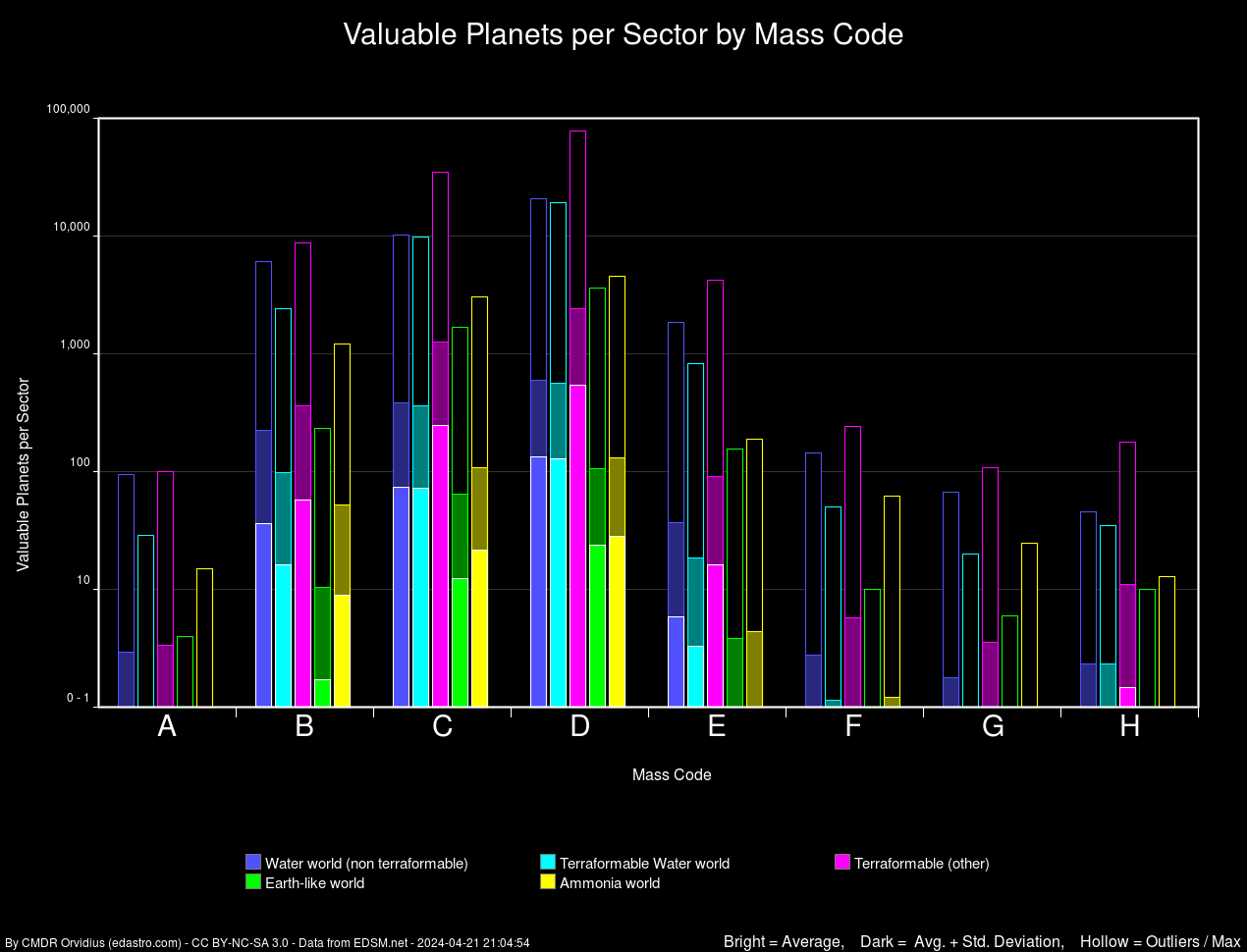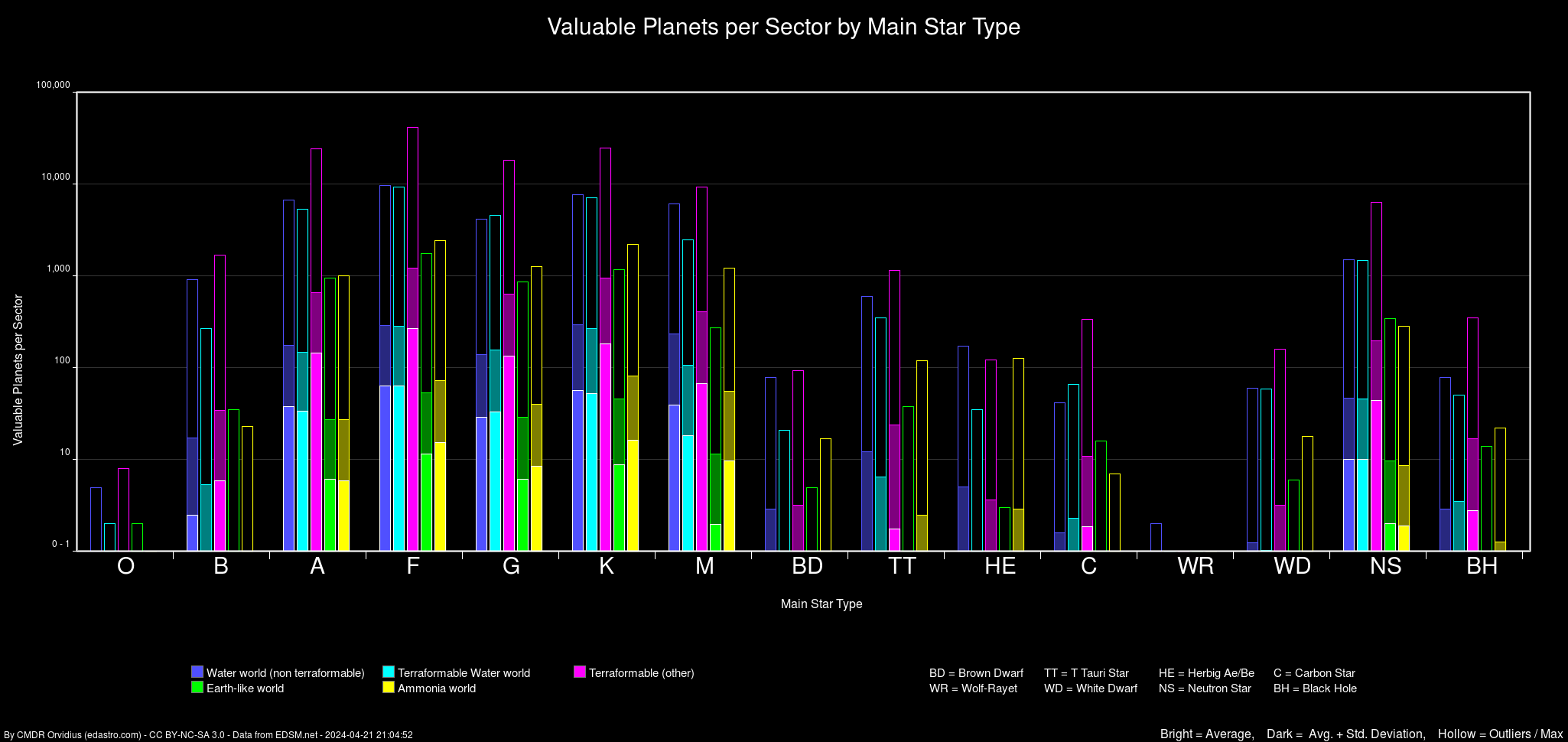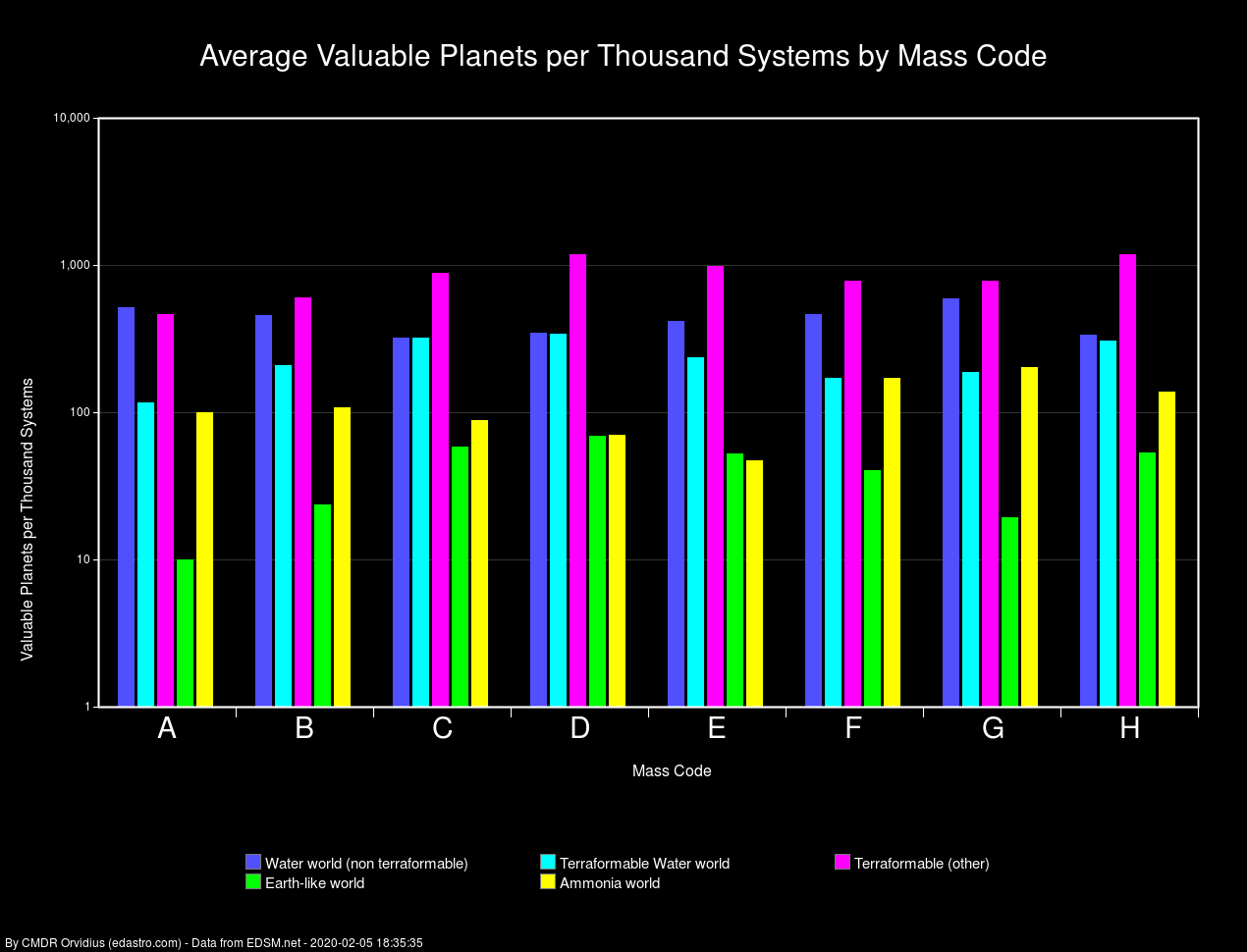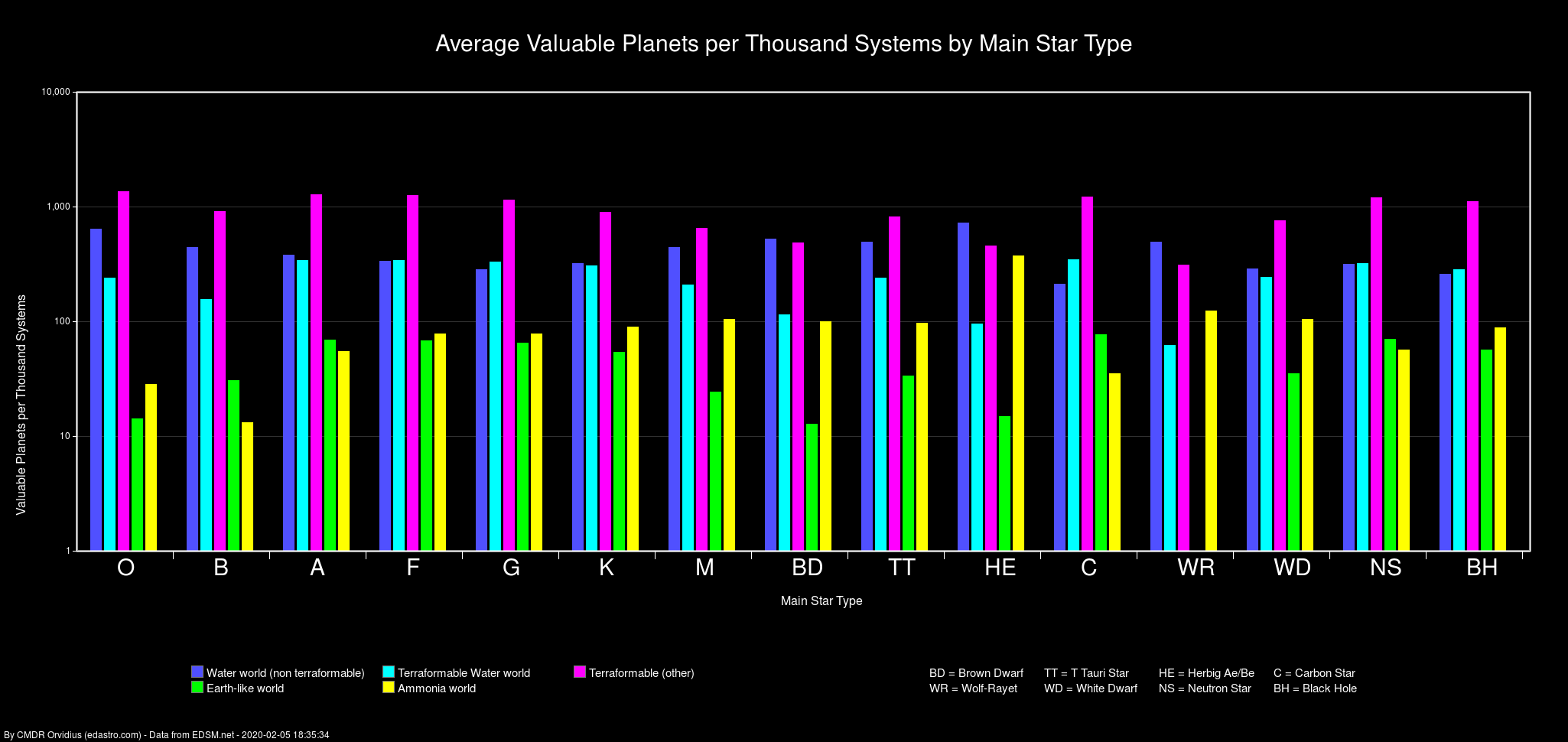OK, here's the first step. I have the wider version of the graph here now: https://edastro.com/mapcharts/heightgraph2W.png
That lack of white dwarfs on the right side, before getting to 1000 ly, really is quite striking. Sure enough, there aren't many in the data:
That lack of white dwarfs on the right side, before getting to 1000 ly, really is quite striking. Sure enough, there aren't many in the data:
Code:
mysql> select count(*) from stars,systems where edsm_id=systemId and subType like 'White dwarf%' and coord_y>90 and coord_y<1000 and coord_y is not null;
+----------+
| count(*) |
+----------+
| 8 |
+----------+






